My memories of what life was like before the Internet
April 2nd, 2024 by Benj Edwards[Benj’s note — I originally wrote this in 2020 and had it sitting around until now. I still think it might be useful to someone in the future, so I decided to publish it.]
Many Americans alive today witnessed one of the most dramatic cultural transitions since the invention of the printing press: The rise of the consumer Internet, beginning around 1994. For everyone else, life before the Internet may seem like a distant, foggy past. To help future generations understand what happened, here’s what life was like back then, mostly based on my personal recollections as someone born in 1981.
The Internet first made its way to the world as the ARPAnet (1969), a computer network that linked universities and government institutions. The network grew quickly in size and capability, and soon, it opened up to private companies and individuals. Not long after becoming publicly known as the Internet, this global network first made a big splash in the mainstream American press. Around 1995, commercial ISPs began springing up overnight, and soon America was rushing to get connected.
As a result of easy and inexpensive Internet access in homes and businesses (and now in our pockets), many aspects of our society have changed, and I’m going to go over some of them below.
This is a broad generalization
Everything you’re about to read is a generalization. Individual experiences before the Internet differed greatly depending on your location, age, and socioeconomic status.
In fact, experiences varied year-by-year as culture and technology shifted. And obviously, life before the Internet spans back into prehistory. So to simplify things, I’ll be talking about life from the point of view of a middle-class American family in the years before the Internet hit it big—roughly the 1970s to the early 1990s.
I was born in 1981 in Raleigh, North Carolina, USA, and raised there in what might be described as an upper-middle-class white suburban family with a technologically literate father (who was an electronics engineer) and access to varied computer platforms and telecommunications from an early age.
I still think this summary of differences might be useful to people in the future since it is coming from the perspective of a veteran tech historian who has spent nearly two decades writing about these topics.
So first, a very big disclaimer: Your Memories Will Vary.
Life Before the Internet: Media
Getting News
Today, the news is always in our faces thanks to social media, news websites, YouTube, TikTok, podcasts, and more. The news cycle is instantaneous and runs 24 hours a day. If you blink, you could miss something. If you don’t miss it, you faint.
Before the Internet, the news was mostly a daily event. Local news came to most people through local TV news channels and newspapers. The three major broadcast TV networks in the US—NBC, ABC, and CBS—broadcast a 30-minute national nightly news program every weekday. You could also hear national news on the radio. In the 1980s, one of the few cable news channels that cable providers carried was CNN, and you needed an expensive cable subscription to see it.
Monthly magazines and printed newsletters were the primary sources of news for specialized topics that were too niche for deep coverage in newspapers, such as vintage cars, video games, computers, crafts, etc. These publications arrived once a month in your mailbox, and you felt like you were up-to-date with current events in that field.
Research
Today, researching almost any topic from home is easy. The Internet puts most of the world’s knowledge at our fingertips thanks to web-based services like Wikipedia, the Internet Archive, IMDB, Amazon Kindle, and much more. You can find scientific journals, scans of books, and libraries of old newspaper and magazine articles online, and the volume of information is growing every day.
Before the Internet, research on a topic usually involved a trip to the local public library. You’d have to consult a card catalog or ask a librarian for help in finding certain books, then you’d read through the books and make notes. For more specialized research, you could visit a university library.
When researching school reports, students in the pre-Internet age frequently used printed encyclopedias—large multi-volume sets of books organized alphabetically by topic. Every school library had an encyclopedia set and many families did as well.
Whatever people couldn’t find in a library or in books was unknown, and there was no way to get that knowledge until someone happened to research the subject and publish a book or article about it. Then you had to be lucky or diligent enough to buy a copy while it was still in print.
In the time before you could just Google something or look it up on Wikipedia, people had to rely on memory and the books and publications around them to verify events in culture, media, or history. For most people, there was no quick way to answer an obscure question or settle an argument without putting in a lot of research work first.
Sharing Ideas and Publishing
Before the Internet, if you wanted to share an idea with the public, you wrote a letter to the local newspaper (or a magazine) and hope it got published. Your letter was only one of hundreds or thousands received by the publication, so the chances of publication were slim.
Aside from that, you could buy a cheap two-line classified ad in a newspaper to make a small announcement or go to college and become a journalist so you could write articles yourself.
If the ideas you wanted to share were more complex, you could write an article or a book. Some people created zines from photocopied paper and distributed them in person and through the mail. With enough money, you could self-publish anything, but without a big publisher promoting it and distributing it to thousands of bookstores across the country, there was no guarantee that anyone would ever read it.
Watching TV
Watching TV was an entirely different experience before the Internet—and more dramatically, before streaming TV services emerged in the late 2000s. TV viewers watched what was broadcast when it was broadcast or time shifted TV programs using VHS tapes.
Airings of important TV shows, specials, or first TV runs of movies were highly-anticipated nationwide cultural events. People planned their days around watching something on TV on the right day at the right time.
If you missed an episode of a TV show, you were out of luck unless a TV channel decided to show it again (re-runs of popular syndicated shows we common, but individual viewers had no control over that process). To see what time a show would air, you looked at channel listings in a local newspaper or bought a copy of TV Guide, a weekly TV listings magazine, which you could find in every grocery store.
After the introduction of inexpensive and practical VCRs in the early 1980s, many families recorded certain important TV programs on tape for later viewing—movies, news shows, soap operas, cartoons. VHS tapes cost money to buy and space to store, so they often got re-used. VHS video quality was generally poor, but no one really noticed.
Watching Movies at Home
If you wanted to watch a movie from home, you got a subscription to cable TV and checked the listings for HBO or Showtime to see when a movie you might want to see would be airing. Other TV channels often showed edited-for-TV versions of films with commercials.
In the VCR era, you could rent a movie on a tape. To do so, you drove to a video rental store like Blockbuster and looked through shelves covered with tape boxes that included pictures and text.
Many stores only had one copy of each movie to rent, so if the tape had already been rented, it was unavailable. Also, many people rented movies on Friday nights, so if you wanted a popular movie, you had to get to Blockbuster early before all the copies had been rented out. If you were successful, you had to return the VHS tape to the store within a few days or pay a late fee.
Music Discovery and Listening
Prior to the Internet, most people discovered new music through Top-40 radio stations and cable TV stations such as MTV. You could also get tips on new music from friends or by visiting a record store and asking an employee for a recommendation.
Music was distributed on physical media exclusively in formats such as vinyl LP, cassette tape, and compact disc (CD). To get it, you had to drive to a music store, hope they had the album you wanted in stock, and buy it. People bought many albums without having heard any of the music on it beforehand.
Sharing music with friends meant letting someone borrow a record, listen in on your Walkman, or dubbing favorite tracks onto cassette (mix tapes).
Sharing Photos
Prior to digital cameras, most people used 35mm snapshot cameras with rolls of film with enough room for 24 or 36 photos. Photos were expensive and people did not take very many, relative to today. Although some enthusiasts had their own home darkrooms, most people dropped off these rolls at photo processing stores and bought paper prints.
To share the photos, people paid for extra prints and either put them into photo albums that people could look at in person or mailed the copies to friends and family. As a result, most of the photos people captured stayed at home and were rarely seen.
And due to the cost of taking photos, developing them, and ordering prints, there weren’t as many photos of events as there are now. A whole trip might be captured in a handful of photos, or an important event might not be photographed at all if it didn’t occur to anyone to capture it at the time.
Life Before the Internet: Relationships
Personal Correspondence
Before email and social media, people kept in touch with phone calls, letters, greeting cards, and post cards. Unless you both lived close by, phone calls were very expensive because of long distance charges (sometimes even within the same area code).
Because of this, handwritten letters held on as a popular means of correspondence up until the rise of email in the mid-1990s. Letters required the foresight of buying stationary and a stamp, then putting it in a mailbox. And of course, a response (if you got one), could take weeks or months to arrive. It was not uncommon to only hear from distant relatives via letter once a year around the holidays.
Locating and Contacting People
Before the Internet made it easy to keep track of people using online phone books, personal websites, and social media, it was easy to lose track of people. A childhood friend could move away and you’d have no idea where they went or if you’d ever see them again. A potential romantic partner could stop answering the phone and firmly end a relationship. If a relative wanted to distance themselves from a family, they could just move away.
If you wanted to find someone, your best bet was to use a phone book. Their number would have to be listed (you could opt-out of being listed in the phone book), and you’d have to know their city. Then you’d somehow have to obtain a phone book from that city from a phone customer that already lived there. Generally speaking, there were no national phone books until the CD-ROM era, and even then, they were expensive and difficult to obtain.
(An aside: My dad borrowed a national CD-ROM phone book home from his work in the mid-late 1990s that cost something like $500, and we used it to look up the names, phone numbers, and addresses of distant relatives in California that we didn’t know personally. I recall that it felt like we were grossly violating their privacy, even though we never contacted them.)
Most phones were land lines. Even if you knew someone’s phone number, they would have to be physically at home at the right time and in the right room where the phone was located to receive your call. Not everyone had answering machines, so you couldn’t necessarily leave them a message. And few people had call waiting, so if they used the phone all the time, you’d just get a busy signal. If you didn’t pick up the phone, you never knew who just called, and it didn’t bother you that much. It was still easy to disengage from the wider world if you wanted to.
Privacy
In the world before the Internet’s advertisement-surveillance complex spun up its engines and before some websites decided to cross-reference every public database and put the info online, privacy was the default state of the world. You could keep to yourself, and if you disliked a community, family, or friends, you could simply move away to cut ties. You’d never hear from or see any of them again—and they wouldn’t know what you were up to—unless you made the effort to tell them.
Before the Internet, giving your home address to others (even in a printed periodical) didn’t instantly mean an invasion of privacy like it does today. There were no consumer satellite maps like Google Earth to see exactly where you lived from the sky by address, and no Google Streetview to get a look at your street and house. If you wanted to check out where someone lived without there permission, you had to physically travel to that location—and that behavior was generally called “stalking.”
On the other hand, the Internet has made other activities more private among your local community than they used to be, since you had to visit public places and hire people to do them, such as banking, booking travel, viewing or purchasing pornography, and shopping. If you lived in a small town before the Internet, everyone in town knew what you were doing.
Dating and Friendships
Dating before the Internet required a lot of patience and luck. Most potential mates came your way from set-ups by friends and family, pulled from people in your local social circle of friends, classmates, or colleagues. Many relationships happened by accident, through chance meetings in public—where it felt like fate had intervened.
If your social circle fell flat, you moved somewhere else, placed classified ads in a newspaper (i.e. “Beach Dude Seeks Surfer Queen”) or frequented bars. There were also 1-800 singles hotlines where people would set up a profile and leave voice messages for others to reply to, though few people used them, because (so I’ve heard) few people were honest with descriptions of their appearance.
Life Before the Internet: Commerce
Mail Order Shopping
Before the Internet, most people shopped at stores in person. But if you wanted to shop from home, you used a mail-order catalog. Each catalog typically included photos of items you could buy and their prices. If you wanted to order, you filled out a paper order form and mailed it along with a check. (Later, you could call and give them a credit card number.)
Shipping and Handling charges were relatively expensive, and the service was slow. In the pre-Amazon.com era, you usually had to wait 6-8 weeks for items to arrive if the seller was prompt in shipping. Otherwise, you might wait 3-6 months for an item, and there was no tracking the package, so you had absolutely no idea when it would actually get there. That made actually receiving a package a very pleasant surprise.
Banking
In general, people kept track of their bank account balance at home, on paper, in a checkbook. It was called “balancing your checkbook.” Or if you wanted to make sure, you visited a teller at a bank either in person or through a drive through window. Later, with bigger banks you could check account balances at a computerized ATM or call an automated phone number. If you wanted to move money between accounts, you visited a bank in person and talked to a teller.
Buying or Renting a Home
If you wanted to buy a house before the Internet, you contacted a real estate agent, and they often referenced a printed book of available properties for sale called the MLS guide (multiple listing service). In the 1980s, each property listed included a single grainy, photocopy-quality black and white photo of the house for sale. You had to visit each house in person to check it out in more detail. That made distant moves much more time-consuming to plan.
To find renal housing before the Internet, you picked up a printed apartment guide (often found at grocery store entrances) and called around asking about rent or bought a newspaper and looked in the classifieds section.
Selling Things to Other People
Before eBay and Craigslist, if you were a private individual and you wanted to sell some random stuff you had (that none of your friends wanted), you typically either held a yard sale, rented a spot at a flea market, or bought a small one or two-line add in the Classifieds section of the local newspaper. You could also advertise in specialist magazines or periodicals.
Speaking of eBay, it was very difficult to find obscure out of print media like books, movies, computer games, or video games before the Internet unless you happened to have a really comprehensive used book, video game, or video store nearby. Beyond media, discovering and purchasing a specific item no longer in production (anything: tools, antiques, shoes, etc.) required a lot of luck and patience or excellent connections in a specific field, and it was entirely possible you’d never find one.
Navigation and Travel
In the age before the Internet provided perfect online maps to everyone, if you wanted to get somewhere and didn’t already know the way, you had to ask for directions or buy a paper map. It was easy to get lost while driving, so people didn’t often venture out beyond their usual stomping grounds without making a solid plan first.
When asking a friend for directions to a location, many people drew out crude maps (not to scale) on paper featuring key landmarks or street intersections that would help.
Also, air travel wasn’t as easy as booking a flight online. You had to call or visit a travel agent to book a flight, and they got a cut of the ticket sale. Long distance travel was far more expensive and less spontaneous as a result, and many families did road trips by car instead.
Life Before the Internet: Culture
Nerds and Outcasts
Before the Internet allowed every niche cultural group to congregate together online, it was easy to become an outcast if you let your unusual interests show in public. This led to a lot of hiding of behaviors seen as being “outside the mainstream” of local culture or American culture in general. People who couldn’t or didn’t hide their non-mainstream interests often got picked on, bullied, shunned—and sometimes even killed. Today, like-minded groups can gather online for support, for better and for worse.
Mental Clarity and Isolation
Without a non-stop umbilical to social media, people could have profound moments of solitude with their thoughts before the Internet (they still can—it’s just far more difficult now). It was easier to think deeply without having to make an active effort to shut out the online chatter as we do today. On the other hand, it was also easy to very become lonely if you were isolated, and that could threaten lives.
Even with all the advancements the Internet has brought us, we are lucky that we still can turn it off and take a break—although as more of culture, business, and society moves online, that gets harder every year.
What do you remember?
Obviously, my story is incomplete, limited by my own experiences and what I’ve learned from others. Do you have any interesting comparisons you can make between life before the Internet and after? Let me know in the comments.
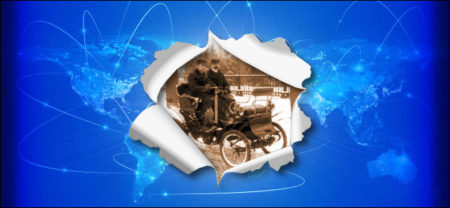

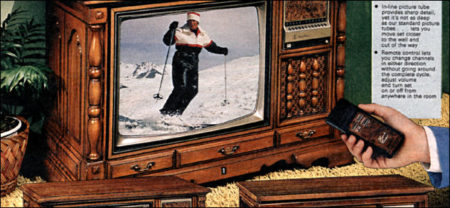
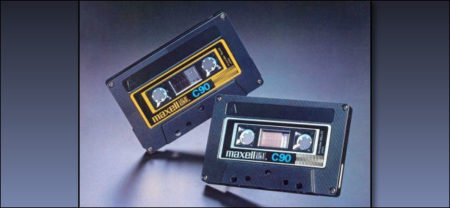


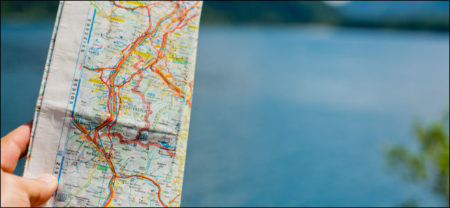


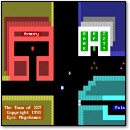
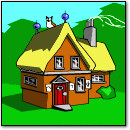
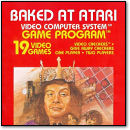
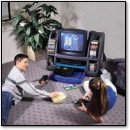
April 2nd, 2024 at 5:05 pm
Regarding finding a home: In college towns there were often rental locator services that you paid a fee for (as did the landlord) and they had a room with rental listings posted on the wall that you could copy down phone number for. I think the one in Berkeley was called “Homefinders.”
There was also a similar service for finding roommates or rooms for sublet. I’m pretty sure the one of those in Berkeley was called “Match.”
April 3rd, 2024 at 8:44 am
Can’t believe no one took this pitch. It’s as relevant today as it was four years ago.
Out of all of the topics you covered here, the one that stands out the most to me is travel. Even in the early internet age, you could get directions from something like MapQuest, but that was hardly a guarantee that you’d arrive at your destination, or in a timely fashion. One wrong turn and you were living your own personal Deliverance.
Further, cell phones were limited to the extremely wealthy, particularly ones that were built into a car. If you got lost, your vehicle broke down, or had an accident, you had to essentially pray that someone ran across you and could provide help.
April 3rd, 2024 at 9:01 am
Really interesting article. We really are lucky to live in a world in which the internet exists. To have a near infinite amount of knowledge is something we should all appreciate, although you have to sift through a lot of misinformation to find what you need and is accurate.
Having said that, life prior to the internet was a lot slower because things were not instant, and we lived less impulsively. I also feel the world seemed less negative and civil since negative discourse was more contained. Again, great article.
April 3rd, 2024 at 11:21 am
I was born in 1980 in a similar sounding family, albeit in the Midwest, but I recall a lot of the article.
For me, the biggest change is children playing outside. I remember telling my parents I was playing outside or going to a friend’s house and they’d be like, “ok, check in in a couple hours.” Which meant physically coming home or calling home on the friend’s landline. Depending on the time of day, it could also be “come home when the street lights come on.” Occasionally, a kid would need to come home early or would not have “checked in” so a parent would walk out in the driveway and yell their name. Like some audible bat signal the kid would arrive home.
Another aspect with regard to dating as a teen is that when you called a girl there was a very real chance her dad would answer and you would have to ask him to talk to his daughter. That could be terrifying, lol. There was no ability to just text her or call her directly. Eventually some of the more talkative girls would get their own landline because the parents would miss calls because she was always on the phone, and as mentioned no call waiting then. Also, when you went to pick up a girl you had to go to the door and the parents would usually answer.
Another phone related note, was the start of *69 where if the phone rang and you didn’t answer in time you could press *69 and it would tell you the number that called. I think this cost $0.75 each time when it first rolled out, which was a decent amount then.
Thanks for the memories.
April 3rd, 2024 at 11:39 am
Thanks, everybody. Glad you enjoy the piece. Keep the memories rolling in!
April 5th, 2024 at 12:42 pm
I just found a printed out MapQuest map of the area around my friend’s house in another city tucked into my yearbook. It shows the exit number on the interstate and lists the key turns once you get off the highway. I remember getting a little lost when I went.
April 5th, 2024 at 2:45 pm
“For most people, there was no quick way to answer an obscure question or settle an argument without putting in a lot of research work first.”
It’s almost unbelievable that this is the grounds for the Guinness Book of World Records — to settle questions of “tallest / fattest / fastest man” trivia come up at bars, hence the beer sponsor.
All the many long nights spent listening to my parents speculate about that movie they saw, what was it called, with that actor who was in the other movie, the one that won the Oscar a couple of years ago… and you’d never find out what the movie was or who the actor was because they just genuinely didn’t remember and didn’t know how to find out, but nonetheless refused to let their ignorance prevent these matters from being the main topic of discussion. I kind of felt bad when I started whipping my phone up and pulling up answers for them, because it seemed like I was depriving them of conversation, but the conversation they were conducting was complete nothingburgers.
April 8th, 2024 at 8:27 am
Great memories, Rowan. Yeah, it’s almost hard to fathom these days, but those exact arguments about who was in what movie, etc. made the Internet Movie Database (IMDB) such an amazing website on the early web. It felt like one of the web’s killer apps (it started as a newsgroup DB in 1990 and moved to the web in 1993!). Wild that we were so excited about that, but it was amazing to have almost godlike ability to access that information available for free online.
April 18th, 2024 at 2:25 pm
I remember using a map to navigate in European highways was quite fun actually. I still use some of those when I want to do roadtrips on back roads.
I would also add that searching an interesting movie at the movie rental shop was quite something as the categorization was very subjective. Here are the top 5 movies of the week. Are they good? Not necessarily, but a lot of people rent them (and were probably disappointed 😀 ).
Thanks for the summary.
April 22nd, 2024 at 9:37 pm
I was born in 1963, so a good portion of my life was pre-Internet. In the 1970s, we lived in Columbus, Ohio which was the home of CompuServe. A friend of my father worked at Compu-Serve, as it was styled back then. One summer evening (ca. ’74 or ’75), my father’s friend brought over a portable teletype with an acoustic coupler. It took some fiddling to get it to work with our Trimline phone because the coupler was designed for a standard handset, but it did work. We spent the rest of the evening playing a text-based game version of Star Trek. While I’m aware today that CompuServes network was private and separate from the Internet, at the time it felt like visiting the future.
April 23rd, 2024 at 8:16 am
Those are amazing memories, Marc! Thanks for sharing. Playing Star Trek on a teletype in the 1970s would have blown my mind.
February 10th, 2025 at 10:35 am
CDs outclassed floppies in many ways, but for small offline storage and frequent edits—like updating and sharing an Excel file—floppies remained more practical.
USB flash drives eventually solved this, but by the time they were large enough for games and movies, digital distribution had already made physical storage largely irrelevant.
What many people miss today isn’t outdated tech but the rights that came with it—ownership, repairability, and privacy, all of which are increasingly restricted in the digital age.
June 23rd, 2025 at 2:09 pm
I remember trying to find who made a particular song so I could put it on a mix tape when I was in high school. The song was “Walking on Sunshine”, one that radio stations played often on Top 100 Songs of the Last Decade shows and whatnot, but I never seemed to catch when they mentioned the band. I asked at CD stores, and the clerks didn’t know, either. Finally, after MONTHS of searching, I discovered that the band was “Katrina and the Waves”, bought the CD, and was very happy.
Contrast this to: when I was a young adult and the internet was just starting to become commonly-used, people in the office I worked at were talking about a song they’d heard on the radio and wondering what it was called. I asked for a lyric from it, searched (I think I used Yahoo, as this was definitely before Google) and found the song. My fellow office workers were VERY surprised and impressed that I’d found the name and singer so quickly and easily – even the one who was a couple of years younger than I was.
There were maybe 10 years between these two events.